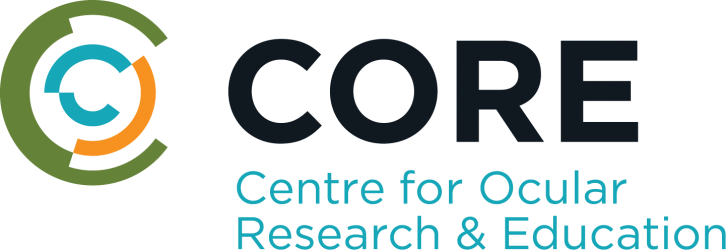Publications
Showing 20 results out of 70 in total.
Phan,C-M., Hui,A., Shi,X., Zheng,Y., Subbaraman,L., Wu,J., Jones,L.
The Impact of Comfort Eluting Agents and Replacement Frequency on Enhancing Contact Lens Performance
Clinical Ophthalmology 2025;19(March 12):857-873 [ Show Abstract ]
This review explores the development and clinical implications of soft contact lenses designed to elute comfort agents, emphasizing their role in enhancing user experience and ocular health. As discomfort remains one of the primary reasons for discontinuation of lens wear, this concept aims to address this challenge by gradually releasing these agents over their period of use. This review also explores the effectiveness, safety, and user satisfaction associated with frequent replacement schedules of these lenses. Clinical trials demonstrate that lenses with eluting comfort agents significantly reduce dryness and irritation, leading to improved wear-time and overall comfort. The findings suggest that frequent replacement not only enhances lens hygiene but also maximizes the therapeutic benefits of the eluted agents, promoting a healthier ocular environment. The implications for practice highlight a shift towards more patient-centered approaches in contact lens design and management, aiming to improve adherence and satisfaction among users. This research paves the way for future innovations in contact lens technology, focusing on personalized solutions that cater to individual comfort needs.
Phan,C. M., Wulff,D., Thacker,M., Hui,A.
Drug releasing contact lenses and their application to disease presentations
Clinical and Experimental Optometry 2025;Online ahead of print [ Show Abstract ]
Eye drops, the most common method for anterior segment treatment, face challenges of inefficiency, with less than 7% instilled drugs typically reaching target tissues of interest. The advent of contact lens drug delivery systems offers a paradigm shift, enhancing drug residence time and bioavailability on the ocular surface. This review focuses on the considerations and challenges in developing contact lenses for drug delivery, particularly for managing four categories of ocular diseases: anterior segment infections, dry eye disease, ocular allergies, and glaucoma. Each disease category requires tailored therapeutic approaches, and the technical intricacies of drug-releasing contact lenses must address concerns related to lens properties, drug release duration, and safety. The aim of this review is to provide insights into the therapeutic needs of ocular diseases and offer a comprehensive overview of the progress made in this innovative approach. The emergence of a commercially available ketotifen fumarate-releasing lens serves as a testament to the feasibility and potential benefits of this innovative approach, paving the way for further refinement and targeted applications in ocular therapeutics.
Phan,C.-M., Ho,B., Hui,A., Walther,H., Zhen,Y., Subbaraman,L., Shi,X., Wu,J., Jones,L.
Evaluating the initial and end-of-day wettability of contemporary daily disposable contact lenses using various in vitro methods
Optometry and Vision Science 2025;102(5):375-381 [ Show Abstract ]
SIGNIFICANCE:
Contact lens wettability is potentially correlated with friction, which is linked to lens comfort. However, measuring wettability can be highly variable. This study assessed wettability using three techniques for a more accurate profile.
PURPOSE:
To evaluate the wettability of contemporary daily disposable contact lenses after 16 hours on an in vitro model using the sessile drop, captive bubble, and a novel in vitro noninvasive keratograph breakup time (NIKBUT) method.
METHODS:
The wettability of six contemporary silicone hydrogel contact lens materials (verofilcon A, delefilcon A, senofilcon A, kalifilcon A, stenfilcon A, and somofilcon A) and two conventional hydrogel materials (nesofilcon A and etafilcon A) were evaluated using an in vitro blink model at t = 0 and 16 hours. The blink rates of the eye model were 20 blinks per minute. Sessile drop and captive bubble angles were analyzed using the Optical Contact Analyzer. NIKBUT was assessed on a blink model in combination with the OCULUS Keratograph 5M.
RESULTS:
There were no significant differences in wettability for any lens types between 0 and 16 hours when assessed using the captive bubble or NIKBUT methods (p>0.05). For the sessile drop method, verofilcon A had the lowest contact angle values (36.5 ± 2.9°), and all lenses except for etafilcon A had similar wettability after 16 hours. All the lenses had similar wettability when assessed using the captive bubble method, suggesting that they had similar wettability under optimal wetting conditions. For NIKBUT, delefilcon A had the longest NIKBUT values (9.0 ± 1.0 s) after 16 hours.
CONCLUSIONS:
The sessile drop technique produced the most measurable differences in wettability between different lens types, whereas the captive bubble technique was not able to provide any measurable differences between lenses. NIKBUT measurements may provide a better measure of on-eye wettability, but variability in the results using the current eye model still needs to be addressed in future studies for improved repeatability. Although the contact lenses showed different contact angles and NIKBUT results, their in vitro wettability did not significantly change over the 16 hours of simulated wear in terms of the captive bubble or NIKBUT values.
Richards,J., Jaskulski,M., Woods,J., Guthrie,S., Kollbaum,P.
Optical characterisation and vision quality assessment of two myopia control contact lenses
Ophthalmic and Physiological Optics 2025;Online ahead of print [ Show Abstract ]
Purpose
This investigation examined the image and vision quality of two commercially available daily disposable myopia control soft contact lenses.
Methods
Wavefront errors were measured with an SHS Ophthalmic aberrometer for two myopia control soft contact lenses: a coaxially designed dual-focus lens (omafilcon A, CooperVision MiSight® 1 day, MS1d) and a design employing multiple add powers that included non-coaxial optics in annular add zones (senofilcon A, Johnson & Johnson Vision ACUVUE® Abiliti™ 1-Day, AB). Geometric optics ray tracing generated point-spread functions and wave optics were used to compare modulation transfer functions (MTFs) and simulated letter images. Twenty-six myopic children completed a randomised, non-dispensing, contralateral double-masked clinical trial. After 1 h of wear, right and left eye visual acuity (VA), subjective vision quality and lens preference (Likert) were assessed while viewing monocularly.
Results
The lens containing non-coaxial optics employed a small central zone with approximately +10.00 D of added power and two annular rings with a power gradient typical of non-coaxial optics. The coaxial design contained a centre zone with a distance correction and two annular zones with a fixed add power of approximately +2.00 D. MTFs and simulated images were better with small pupils, which was most noticeable with the coaxial design. Distance VA was -0.02 ± 0.04 with MS1d and 0.09 ± 0.08 with AB, p < 0.01. The majority of participants (77%) reported a preference for one lens; 54% preferred the MS1d and 23% preferred the AB lens.
Conclusions
Myopia control contact lenses employing coaxial or a mixture of coaxial and non-coaxial optics both reduced retinal image contrast but successfully imaged high spatial frequencies and provided high quality of vision. Image and vision quality were slightly superior in the lens employing coaxial optics alone.
Schulze,M., Guthrie,S., Ho,B., Woods,J., Jones,L.
A Clinical Evaluation of Lifitegrast Ophthalmic Solution 5% in Symptomatic Contact Lens Wearers
Clinical Ophthalmology 2025;19(August):3033-3049 [ Show Abstract ]
Purpose: To evaluate the effectiveness of lifitegrast ophthalmic solution 5% in alleviating end-of-day dryness and discomfort in symptomatic contact lens (CL) wearers.
Patients and Methods: This was an open-label study in symptomatic CL wearers with ratings of ≥ 40 for end-of-day dryness on a visual analog scale (VAS; 0– 100 scale; 100 worst). Participants wore their habitual CLs and instilled lifitegrast twice daily for 12 weeks with lenses removed. The performance of lifitegrast was assessed by comparing VAS 0– 100 ratings (100=worst) at 2, 6 and 12 weeks for end-of-day dryness and discomfort and Contact Lens Dry Eye Questionnaire-8 (CEQ-8) scores to baseline levels. Tear samples were collected at all visits to measure 10 different tear cytokines.
Results: Forty participants (33F, mean age 30.8± 12.1 years, 65% daily disposable CL users) completed the study. There were no serious adverse events. Median (range) visual analog scale ratings for end-of-day dryness (Baseline: 76 (19– 99); 2-weeks: 43 (0– 95); 6-weeks: 26 (0– 94); 12-weeks: 15 (0– 98)) and discomfort (Baseline: 70 (10– 97); 2-weeks: 45 (0– 95); 6-weeks: 25 (0– 84); 12-weeks 11 (0– 96)) both significantly improved over time (all p< 0.01). At baseline, 100% of participants rated dryness ≥ 40, which dropped to 17% at 12 weeks. Baseline CLDEQ-8 scores of 22 (12– 31) had significantly decreased to 11 (1– 26) at 12 weeks. Comfortable CL wear time increased significantly from 6± 2 hours at baseline to 9± 3 hours at 6 and 12 weeks (all p< 0.01). Cytokine levels did not change over time.
Conclusion: Lifitegrast significantly improved end-of-day dryness, end-of-day discomfort, CLDEQ-8 scores and comfortable CL wear time within 2 weeks of use.
Sedaghat,A. Shokrolahi,F., Yeganeh,H., Shokrollahi,P, Hosseini,S.
Injectable gellan gum hydrogel with PLGA-LDH microspheres for controlled alendronate release and bone regeneration
International Journal of Biological Macromolecules 2025;321, Part 1(September):Article 146092 [ Show Abstract ]
Injectable Gellan Gum-Gelatin hydrogel (GG/gelatin hydrogel) with PLGA-LDH composite microspheres (Gel-PMA) was developed for controlled alendronate (ALN) release and enhanced bone regeneration. Manganese-Zinc Layered Double Hydroxide (LDH) nanoparticles (∼142 nm) were synthesized, loaded with ALN (ALN-LDH, about 25 %), and encapsulated in poly (d,l-lactide-co-glycolide) (PLGA) microspheres (∼120 μm) via a solid-in-oil-in-water (S/O/W) double-emulsion technique. Microspheres (10 wt%) were incorporated into a GG/gelatin hydrogel and crosslinked with CaCl₂. Physicochemical and morphological analyses confirmed successful fabrication of LDH, ALN-LDH, ALN-LDH-loaded PLGA microspheres, and composite hydrogels. Mechanical testing showed that incorporating PLGA microspheres increased compressive strength from 30 to 170 kPa.
Gel-PMA enabled sustained ALN release (∼95 % in 28 days), significantly improving ALN cumulative released amount (drug availability) over previous studies. Gel-PMA also exhibited excellent biocompatibility (>90 % cell viability). In vitro studies demonstrated osteogenic potential of Gel-PMA through increased ALP activity (0.0062 to 0.022 μmol/min/mg), calcium deposition (0.0125 to 0.022 μg/μl), and Alizarin Red staining over 28 days. ARS and MT assays, alongside upregulated ALP, Col I, and OCN gene expression, further confirmed osteogenic differentiation. These findings highlight Gel-PMA as a promising injectable scaffold for bone tissue engineering, offering controlled drug release, enhanced mechanical properties, and superior osteogenic potential.
Shokrollahi P, Garg P, Hui A, Phan,C, Jones,L. PVA-Based Hydrogel Inserts for Atropine Delivery for Myopia Treatment The Association for Research in Vision and Ophthalmology Annual Meeting, Salt Lake City, May 4, 2025 [ Show Abstract ]
Purpose
Myopia progression is a global problem, with 50% of the world’s population predicted to be myopic by 2050. This project aimed to develop atropine (ATR)-releasing ocular inserts based on polyvinyl alcohol (PVA) hydrogels for the treatment of myopia, which could be complementary to other myopia control methods, such as spectacles or contact lenses.
Methods
PVA was dissolved in water at 80°C to prepare a 10% (w/v) solution. The solution was divided into two parts. ATR was added to one part to give 0.6% (w/v) concentration, and the other part acted as a control. Both groups were transferred to a silicon mold (5.5mm diameter, 0.2mm height, ~100µl) and subjected to six freeze-thaw cycles, alternating between freezing at -20°C for 16 hours and thawing at room temperature for 8 hours
Mechanical properties were studied via a compression test (TA instruments, Hamilton, USA), and the morphology was assessed using scanning electron microscopy (Quanta FEG 250, FEI, USA). The release of atropine was then measured in 1mL of phosphate-buffered saline every 30 minutes for 6 hours.
Results
SEM analysis revealed a highly interconnected porous structure and a narrow pore size distribution (12±8µm, Figure 1A). The hydrogels displayed about 0.86 kPa compression modulus and 21.81 kPA compression strength at 30% strain (Figure 1B) and withstood 5 compression cycles with minimal changes in modulus. The discs released about 25% of the initial ATR loaded (~600 µg) in the first 30 min and about 50% in 1 hour. Nearly, 100% of the cargo was released in 3.5 hours (Figure 1C). The release profile followed first-order kinetics (R2 = 0.9628).
Conclusions
The open pore network of the discs can accommodate water and improve the elastic soft “feel” of the insert, while being structurally robust and easy to handle. This hydrogel insert based on PVA, a polymer with FDA approval for biomedical applications, can support the gradual release of ATR up to 3.5 hours and helps avoid the side effects of 1% ATR eye drops, while providing a similar cumulative concentration of the drug to the eye. Future studies will focus on optimizing parameters to extend the release duration.
Shokrollahi,P., Garg,P., Wulff,D., Hui,Al., Phan,C-M., Jones,L.
Vat Photopolymerization 3D Printing Optimization: Analysis of Print Conditions and Print Quality for Complex Geometries and Ocular Applications
International Journal of Pharmaceutics 2025;668(January):Article 124999 [ Show Abstract ]
Abstract: 3D printing, also known as additive manufacturing, continues to reshape manufacturing paradigms in healthcare by providing customized on-demand object fabrication. However, stereolithography-based 3D printers encounter a conflict between optimizing printing parameters, requiring more time, and print efficiency, requiring less time. Moreover, commonly used metrics to assess shape fidelity of 3D printed hydrogel materials like ‘circularity’ and ‘printability’ are limited by the soft nature of hydrogels, that can cause irregularities in their boundary. To unlock the full potential of 3D printing of biomaterials, it is also necessary to understand correlation between printing parameters and ink properties. In this work, a method based on curing depth, overcuring (cumulative cure), and print thickness was developed, which enables a time-efficient and reliable determination of printing conditions for complex geometries using gelatin methacrylate hydrogel biomaterial ink. We also examined the impact of printing direction on the print quality in terms of object/print thickness and aspect ratio. Moreover, the effects of dye concentration, exposure time, and layer thickness on print quality were evaluated, with discussions focused on the correlation between print dimension to layer thickness. Further evaluation was achieved by successfully printing bioinspired corneal stroma-like scaffold and delicate structures like a contact lens and a model eyeball, substantially expanding the scope of this method in producing high-quality prints with intricate details. We also demonstrate the effectiveness of ‘Feret ratio,’ another measure of object shape, in assessing the shape fidelity of different prints. Overall, the results highlight the practical potential of this method in enhancing the speed and reliability of the 3D printing processes involving complex geometries using a low-cost 3D printers.
Stapleton F, Craig J, Wolffsohn J, Jones L . DEWS III Management & Therapy report British Contact Lens Association Meeting, Birmingham, UK, Jun 6, 2025
Stapleton,F., Argüeso,P., Asbell,P., Azar,D., Bosworth,C., Chen,W., Ciolino,J., Craig,J., Gallar,J., Galor,A., Gomes,J. A. P., Jalbert,I., Jie,Y., Jones,L., Konomi,K., Liu,Y., Merayo-Lloves,J., Oliveira,F. R., Perez Quinones,V. A., Rocha,E. M., Sullivan,B. D., Sullivan,D. A., Vehof,J., Vitale,S., Willcox,M., Wolffsohn,J., Dogru,M.
TFOS DEWS III Digest Report
American Journal of Ophthalmology 2025;Online ahead of print [ Show Abstract ]
This digest summarises the interdisciplinary research in dry eye disease (DED) published since the 2017 TFOS DEWS II reports. It comprises seven topics including Sex, Gender, and Hormones, Epidemiology, Pathophysiology, Tear Film, Pain and Sensation, Iatrogenic and Clinical Trial Design and explores how each of these inform diagnostic methodology, disease subtype and management of DED.
Sex- and gender-related differences significantly influence the ocular surface due to hormones, sex chromosomes, sex-specific autosomal factors, epigenetics, care-seeking behaviors, and service utilization. Epidemiological data reveal that DED prevalence varies by age and sex, influenced by diagnostic criteria and the multifactorial nature of the disease. New risk factors for DED include environmental, iatrogenic, systemic diseases and lifestyle domains.
Pathophysiological distinctions between Aqueous Deficient Dry Eye (ADDE) and Evaporative Dry Eye (EDE) have been clarified. EDE is characterized by a muted inflammatory response at the ocular surface, meibomian gland dysfunction and conceivably phenotypic changes in corneal epithelial cells. There is an expanding role for metabolic, hormonal, physical, neural and cellular stresses, including hyperosmolarity, mitochondrial stress, and neurogenic inflammation.
Advancements in tear film research recommend new approaches to understanding DED pathogenesis and identifying biomarkers, such as microRNAs. Ocular pain perception is linked to structural integrity of corneal nerves, functional capacities of neurons, and activity of the central and peripheral nervous systems. Iatrogenic DED can result from medications, contact lenses, and surgical procedures. Clinical trials now emphasize aligning design and endpoints with DED subtypes and therapeutic mechanisms, with new therapeutics and trial designs under consideration.
Walsh K, Vega J, Chisholm R, Cvarch B, Schwiegerling J, Luensmann D, Marullo R. Performance of two contact lens designs in a clinical setting and through computational optical modelling Global Specialty Lens Symposium, Las Vegas, Jan 17, 2025
Walsh,K., Jones,L., Morgan,P., Papas,E., Sulley,A.
Topical review: Twenty-five years of silicone hydrogel soft contact lenses
Optometry and Vision Science 2025;102(6):361-374 [ Show Abstract ]
SIGNIFICANCE:
The impact of silicone hydrogel (SiHy) contact lens materials on clinical contact lens practice and patient care over the past 25 years is reviewed, along with identifying areas for future innovation in material science and clinical practice to further improve outcomes for contact lens wearers.
A quarter of a century since the launch of SiHy contact lens materials, with many current eye care professionals having never practiced without them as an option, this literature review reflects how this significant change in soft lens material technology has impacted routine clinical contact lens practice and patient care. SiHy lenses now account for approximately 75% of all new daily wear soft lenses fitted and they are available in a wide variety of modalities, replacement frequencies, and designs, including daily disposable, torics, and multifocals. From the physical properties of SiHy materials and their adoption to their use in helping meet patient needs, conclusions can be made where historical clinical issues have been solved, and where innovation in material science and evolution in clinical practice are still required to deliver the best outcome for contact lens wearers. SiHy materials have largely eliminated hypoxia as a complication seen in contact lens clinical practice, and when used for daily wear, in particular as daily disposable lenses, they provide an exceptional option for vision correction that is minimally invasive, comfortable, and effective. This review helps with the understanding of how the eye care profession has adopted the use of these lenses over the last 25 years, and questions what comes next for these widely used family of materials and the opportunities that exist for them to continue contributing to patient satisfaction and to growing the contact lens market.
Weise K, Rhue B, Jones D, Khanal S.. Hot Topic Breakfast - The Future of Myopia Management: Perspectives from Leading Experts SECO International, Atlanta, Georgia, USA, Feb 28, 2025
Wolffsohn, J. S., Benítez-Del-Castillo, J., Loya-Garcia, D., Inomata, T., Iyar, G., Liang, L., Pult, H., Sabater, A., Starr, C., Vehof, J., Wang, M. T. M., Chen, W., Craig, J. P., Dogru, M., Perez Quinones, V. L., Stapleton, F., Sullivan, D. A., Jones, L., Arita, R., Belmonte, C., Chalmers, R. L., Galor, A, Ghosh, A., Labetoulle, M., Nichols, K. K., Pucker, A. D., Rocha, E, M., Sullivan, B., Versura, P., Willcox, M. D. P.
TFOS DEWS III Diagnostic Methodology
American Journal of Ophthalmology 2025;Online ahead of print [ Show Abstract ]
A standard approach to the diagnosis of dry eye disease across eye care practitioners is critical to reassuring the patient, providing consistency between practitioners and informing governments as to the true prevalence and resulting healthcare needs. The Tear Film & Ocular Surface Society (TFOS) Dry Eye Workshop (DEWS) III has reviewed the evidence-base since their previous reports published in 2017 and revised the definition to “Dry eye is a multifactorial, symptomatic disease characterized by a loss of homeostasis of the tear film and/or ocular surface, in which tear film instability and hyperosmolarity, ocular surface inflammation and damage, and neurosensory abnormalities are etiological factors.” Key features from the definition include that dry eye disease is multifactorial, is a disease and not a syndrome and is always symptomatic. Differential diagnosis and ocular examination guidance is given along with the risk factors that should be discussed with the patient. The recommended screening questionnaire is the OSDI-6 with a cut-off score ≥4. A positive result together with a non-invasive breakup time 8mOsm/L) gives a diagnosis of dry eye. In addition, the ocular surface should be stained and positive symptomology together with >5 corneal fluorescein and/or >9 conjunctival lissamine green punctate spots and/or lid margin lissamine green staining of ≥2mm length & ≥25 %width also gives a diagnosis of dry eye. Subclassification was separated into tear film (lipid, aqueous and mucin/glycocalyx) and ocular surface and adnexa (anatomical misalignment, blink/lid closure, lid margin, neural dysfunction, ocular surface cell damage/disruption and primary inflammation/oxidative stress) components, with appropriate clinical tests and cut-offs provided to identify these etiological drivers in an individual, to inform appropriate management and therapy.
Wolffsohn,J., Travé-Huarte,S., Stapleton,F,, Downie,L.E., Schulze,M., Guthrie,S., Stahl,U., Wang,M., Craig,J.
Relative importance of tear homeostatic signs for the diagnosis of dry eye disease
The Ocular Surface 2025;36(April):151-155 [ Show Abstract ]
Aim: Disease misdiagnosis is more likely if standardised diagnostic criteria are not used. This study systematically examined the effect on diagnosing dry eye disease (DED), when tests for evaluating tear film homeostasis were included or excluded from a multi-test protocol.
Method: For 1,427 participants across five sites, data for the full suite of diagnostic tests defined in the Tear Film and Ocular Surface Society Dry Eye Workshop II (TFOS DEWS II) Diagnostic Methodology report algorithm were evaluated; diagnostic sensitivity was calculated when individual signs were removed, and when different combinations of signs were required.
Results: Evaluating just one of the three TFOS DEWS II homeostatic signs resulted in between 12.3 % and 36.2 % of patients who met the DED diagnostic criteria not being assigned this diagnosis. While comprehensive ocular surface staining evaluation, comprising of corneal, conjunctival and lid margin staining, in combination with symptoms had the highest sensitivity (87.7 %) of the three markers, the sensitivity dropped to 44.6 % if only corneal staining was evaluated. Omitting either non-invasive tear breakup time or tear osmolarity each dropped the sensitivity by <5 %. The prevalence of DED was substantially reduced if a diagnosis required symptoms and two of the three signs to be present (by 43.7 %–61.2 %) and by 65.9 % if all three signs indicating a loss of tear film homeostasis were required. The outcomes of the analysis did not change significantly across differing severities of DED symptoms.
Conclusions: The TFOS DEWS II diagnostic algorithm of symptoms plus assessing for a tear film (non-invasive tear breakup time or tear osmolarity) and ocular surface sign can be considered a robust and appropriate approach for DED diagnosis.
Wong,K.Y.. Fast Forward to the Future: Aptamer-Functionalized Contact Lenses Contact Lens Spectrum 2025;40, July/August:
Wong,S., Woods,J., Schulze,M., Fadel,D., Stahl,U., Jones,L.
Performance of Delefilcon A Daily Disposable Contact Lenses in a Group of Digital Device Users
Clinical Ophthalmology 2025;19(July):2439-2452 [ Show Abstract ]
Purpose: To assess the performance of delefilcon A daily disposable contact lenses (CL) in lens wearers who reported heavy digital device use.
Patients and Methods: This prospective study involved lens wearers who used digital devices ≥ 8 hours per day. Delefilcon A CL were dispensed for 2-weeks, to be worn ≥ 5 days/week, ≥ 13 hours/day, using digital devices as normal. At-home questionnaires rating comfort, dryness, and clarity of vision (0– 100 scale, 100=best) were completed on Days 1, 7, and 14± 1 upon insertion, after 8 hours of device use, and before removal. At the Day 14 visit, participants rated overall comfort, dryness, and vision (0– 100 scale) and completed a 5-point Likert-type scale questionnaire.
Results: Thirty-five participants were eligible, 32 completed (27 females; age: 25.3± 6.3 years). Median at-home ratings for comfort, dryness, and vision were ≥ 85, with no difference between days (all p≥ 0.09). Ratings decreased throughout the day (p≤ 0.005), except comfort (Day 7) and vision (Days 1 and 7), where ratings before removal were similar to 8 hours of device use (p≥ 0.014). After 2-weeks, median (range) overall ratings for comfort, dryness, and vision were 96 (70– 100), 93 (50– 100), and 95 (75– 100), respectively. Most agreed the CL performed well, providing good comfort (91%) and vision all-day-long (94%), and did not have dryness with device use (69%). When devices were used ≥ 8 hours, most felt the CL performed well (84%), were satisfied with comfort (88%) and vision (88%), did not experience eye strain (81%), eye fatigue (66%), or episodes of blurred vision (75%).
Conclusion: Delefilcon A lenses provided high satisfaction levels among lens wearers who spent a significant portion of their day using digital devices. Participants rated the CL highly for comfort and vision throughout the day, with most reporting no issues with dryness, eye strain, or blurred vision while wearing lenses and using digital devices.
Woods J, Luensmann D, Guthrie S, Vega J, Richdale K. Do objective and subjective outcomes align when evaluating multifocal soft lens performance? British Contact Lens Association Meeting, Birmingham, UK, Jun 5 to 7, 2025 [ Show Abstract ]
Purpose:
The success of multifocal soft lenses (MF) can differ depending on whether objective or subjective evaluations are considered. This study compared vision results for in-practice acuity and subjective feedback after participants had worn two different MF designs for 1-month.
Methods:
This prospective, participant-masked, randomised, cross-over, daily-wear study involved habitual MF wearers at 5 sites. Study lenses were monthly replacement, silicone hydrogel: comfilcon A (comMF) and lehfilcon A (lehMF). After 1-month wearing each lens, high-contrast logMAR distance, intermediate and near acuities were measured, and participants rated their experience using 0-100 visual-analogue scales, 4-point agreement questions and 5-point preference Likert scales.
Results:
59 participants completed; mean(SD) demographics: 53.2±6.7 years, -1.57±2.14 refractive spherical component, +1.86±0.46 near addition. Both lenses were worn >12 hours/day (p=0.96). Comfort was not different between lenses (all >80, p>0.05). High-contrast acuity was not different (p>0.05) between lenses for distance and intermediate, but near was 2.5 letters better with comMF (p<0.05). Also, more participants preferred comMF for vision for ‘digital device use’ and ‘near’ (both p0.05); no preferences favoured lehMF. While ratings for ‘overall satisfaction with vision’, ‘vision in dim/dark light conditions’, ‘consistent vision throughout the day’ and ‘crisp, clear vision overall’ showed no differences (all p>0.05), comMF was rated 9 points better for ‘crisp, clear vision when using digital devices’ (p<0.01). Differences favouring comMF were reported in all four near vision task agreement questions: when using ‘laptop’, ‘phone’, ‘reading’, ‘digital devices’) plus for ‘crisp vision at all distances’ (all p<0.05). No rating or agreement data favoured lehMF.
Conclusions:
Both lenses provided good overall performance. comMF demonstrated better near acuity which aligned with better subjective visual performance outcomes related to near-work and digital device use. These results support the value of including real-world experience and subjective feedback in multifocal fitting and evaluation.
Yamasaki,K., Nakagawa,H., Motohiro,C., Jones,L., Hui,A.
The impact of a hyaluronic acid derivative-containing care system on the wettability of PEG-coated rigid lenses
Contact Lens Anterior Eye 2025;Online ahead of print [ Show Abstract ]
Purpose: This study investigated how a contact lens care solution containing a hyaluronic acid derivative (HAD) impacts wettability of rigid lenses, with and without polyethylene glycol (PEG) surface coatings when tested in vitro.
Methods: The adsorption of fluorescently labelled HAD and hyaluronic acid (HA) on to PEG and non-PEG coated lenses was compared by fluorescence quantification. The impact of HAD on sessile drop wettability was investigated on PEG and non-PEG coated lenses, which were cycled 300 times between an artificial tear solution (ATS) for 16 h and 8 h in a HAD or non-HAD containing solution. PEG-coated lenses were also rubbed with two commercial solutions over 30 cycles, to observe the impact on wettability. The total amount of lysozyme deposited on PEG-coated lenses when using these solutions after 30 cycles were also compared. Finally, to quantify the maintenance of the PEG coating, the amount of silicon detected nanometres under the lens surface when using either solution was determined using X-ray photoelectron spectroscopy.
Results: Greater amounts of HAD adsorbed onto rigid lenses compared to HA. Use of a HAD-containing solution improved the wettability of non-PEG coated lenses, being similar to uncycled PEG-coated lenses after 21 cycles. The wettability of PEG-coated lenses was maintained with the HAD-containing solution, with less lysozyme deposition and similar levels of silicon detected as uncycled lenses. In contrast, the non-HAD containing solution decreased wettability over cycles, with PEG-coated lenses being similar to non-PEG coated lenses after 90 cycles. These lenses also experienced greater amounts of lysozyme deposition, and a greater amount of silicon detected below the lens surface.
Conclusions: Incorporation of HAD into a contact lens care solution has positive effects on wettability of both PEG and non-PEG coated rigid lenses. In contrast, using a non-HAD containing solution decreased wettability over time, even for PEG-coated lenses.
Zhang,H.Y., Xu,F.Y., Liu,K.K.K., Chan,Y.P., Chow,A., Jones,D., Lam,C.S.Y.
Myopia Management in Hong Kong
Journal of Clinical Medicine 2025;14(3):Article 698 [ Show Abstract ]
Objectives: We aimed to investigate how optometrists in Hong Kong are managing myopic and "pre-myopic" children.
Methods: Clinical files for children aged 6 to 10 years old who had eye examinations from 2017 to 2021 were retrospectively reviewed. Children were grouped by the initial spherical equivalent refractive error (SER) as myopes or pre-myopes. The demographic data, refractive error, and myopia management recommended by the optometrists were analyzed.
Results: A total of 1,318 children (859 myopes and 459 pre-myopes) from ten clinics in Hong Kong were included. Over 5 years, myopia management recommendations shifted significantly (p < 0.001). In 2017, only 18.4% of children were recommended to pursue myopia control (MC), increasing to 42.8% by 2021. The use of MC spectacle lenses increased from 7.3% in 2017 to 36.8% in 2021, becoming the most recommended option. Orthokeratology, MC contact lenses, and atropine remained stable at less than 5% over this period. Children recommended for MC approaches had significantly more myopia than those recommended single-vision lenses or monitoring (p < 0.05). Age of the first visit significantly correlated with SER change from the first visit to the next recommendation update for pre-myopes (r = 0.27, p = 0.013) but not for myopes.
Conclusions: From 2017 to 2021, myopia management patterns in Hong Kong shifted significantly, with more children being recommended for myopia control. MC spectacle lenses emerged as the most commonly recommended method. Younger pre-myopes at their first visit were more likely to have earlier management updates.





